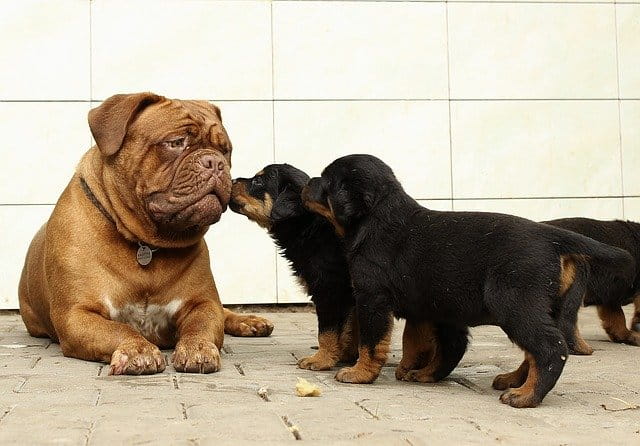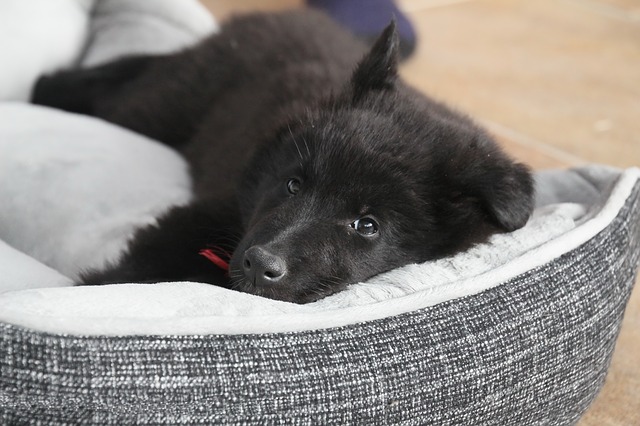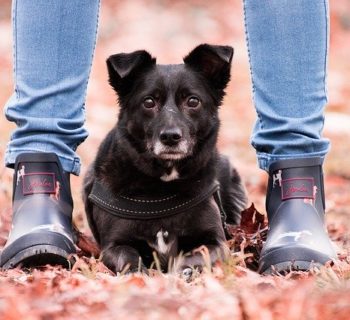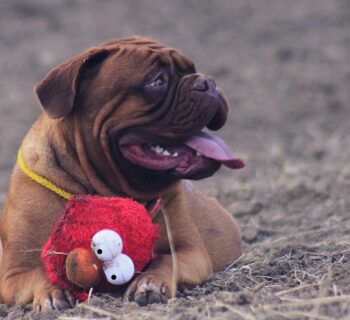Are you planning to add a new puppy to the family? If you are, learning how to introduce your new addition to others in the home, including a dominant dog, is important. Not every dog will enjoy the company of another dog, no matter how much the rest of the family may look forward to bringing home the newest member.
What can you do then? A proper introduction is essential, especially if you own a dominant older dog. Such a dog may not enjoy a new dog's company or be "forced" to share his humans out of the blue.
So if you wonder how to introduce a puppy to a dominant dog? We'll share tips on how to introduce your new canine to a dominant dog. But before that, we'll look at some factors to consider before adding a new pup to the home.
Table of Contents
How Well Does Your Dominant Dog Tolerate Other Canines or Pets?
If your dog does not enjoy the company of other dogs when walking him at the park or at a friend’s place, realize that he’ll not jump up in glee when he sees the new pup either.
If, on the other hand, he tolerates other dogs around well, he may do the same with your new puppy. But it’s hard to be sure, so take some precautions to make the first meeting go as smoothly as possible.
If your dog likes or at least accepts the new addition, you can expect some behaviors from him when around the puppy. The behaviors may include:
- Sniffing the new pup the moment he arrives and also following him wherever he goes
- Showing some excitement in the form of a little rough play and maybe some growling.
- The older dominant dog may also make allowances for the puppy’s inexperience by being more tolerant during play and gentle with the reprimands when the puppy crosses social boundaries because of its inexperience.
Compatibility
Before you bring home a puppy, compatibility is something you should consider. Getting spellbound by the canine’s sheer cuteness or feeling connected to it isn't always a good reason for wanting to bring it home, especially if you already have a much older dominant canine. You have to keep in mind compatibility issues if their stay together is going to be truly harmonious.
Below are some compatibility concerns to consider before bringing a puppy home.
Sex of the Puppy
Your dominant male or female dog is more likely to accept a puppy of the opposite sex than one of the same sex.
Usually, two unneutered males may have no problems getting along even when both become sexually mature. On the other hand, female dogs often prefer to live with members of the opposite sex. If placed together, acceptance may be difficult, and fights could become regular occurrences.
So, if you’re adding a new pup, you should consider adding one of the opposite sex to minimize the likelihood of frequent fights when your puppy reaches maturity.
Consider the Size and Breed Characteristics
What breed is your current dog? Is it a dog from a breed with a particularly strong prey drive? It may not be a good idea to introduce a small, swift breed to it if it is. Most terrier breeds, for example, were bred to hunt small animals. For instance, if your resident dog is a terrier or a terrier hybrid, adding the small Chihuahua or any other tiny breed at all could be asking for trouble.
If you have to bring a really small breed home to a bigger dog, you may have to keep a close eye on them to prevent attacks from the much bigger one.
Also, as large breeds grow older, they often become less active but can still cause harm to a very small puppy by accident. It may, therefore, be safer to bring home a larger breed instead of a small one if the resident dog is a large or giant breed dog.
Personality Match
The new puppy that you plan on bringing from the shelter may share the same personality with your resident dog, but it is also enough reason not to bring such home. Why? Because eventually, there will be dominance problems as your puppy grows to adolescence or adulthood.
Dogs will get along better with opposite personalities as long the respect is maintained. If you have a dominant resident, you should consider picking a puppy that would accept and tolerate the older dog as the pack leader.
Before You Bring the New Puppy Home
- Create separate personal space for each of them
- Have separate food bowls ready to prevent aggression
- Ensure both the new and old resident are up to date on their vaccines
- Keep your resident dog’s favorite toys out of sight to prevent aggressive behavior in case the new puppy reaches for them.
During the Introduction
While your new puppy may not challenge an adult dog, it can be a little too exuberant for your resident dog’s liking.
As you may expect, the resident dominant dog will try to check the behavior by growling or snapping when it becomes an irritation.
A growl is totally normal and should be allowed as long as you’re around to monitor things and ensure no one gets hurt. These behaviors are part of the steps to starting a successful pecking order among the canines. Avoid making a fuss over the new puppy while ignoring the resident pooch.
Also, make sure the area you pick for the first introduction is a neutral area; the yard, the local park, or a friend/relative’s house will do. Put both on leashes; you hold the resident dog while another person holds the puppy on a leash.
Your older dog may sniff as part of the meeting process. Allow this to happen naturally. Don’t hold each to your side tightly, and don’t push them to meet and sniff either. You don’t want them feeling restricted, and neither do you want to force the process.
Keep the Adoration Away from the Resident Dog
Everyone loves puppies, and yours must truly look amazing, so it'd be hard not to show your admiration for it. However, try to reserve it for those times your resident dog isn't near you.
Remember that dogs are pack animals, and as such, their society runs on a considerably strict, hierarchical structure. Whether male or female, your older, the more mature resident dog is the dominant one, the new, smaller one will be lower in the ladder. Fussing over the puppy at the expense of the older resident dog only upsets this natural balance, leading to aggression.
Before petting, cuddling, and feeding your new pup, make sure you've done the same with the resident dog. Doing so reaffirms the resident dog's position, and, as a result, the possibility of a power squabble is very much unlikely.

Supervising
After you finally bring your dog home and complete the introductions, continue to ensure that both dogs are comfortable around each other. Do so for the first few weeks as you establish a routine for the pup while continuing the resident’s old habit. This helps to create the structure required for harmony between both dogs.
During playtime, supervise them and provide each with their toys to prevent minor squabbles escalating into major fights.
Noting Body Language
Even if the dominant dog seems to get along with the new puppy after bringing it home, you still must monitor your canines’ body language for a few more weeks. This will help you assess how they behave or react to each other.
For example, you may find the young puppy wanting to engage in boisterous playtime activities even with the older one’s visible discomfort or disinterest. Body languages to watch out for include;
- Growling
- Snarling
- Raised fur at the back of the neck
- Arched back
- Extended stares
- Display of teeth
Things You Should Not Do or Allow
- Never allow the dogs to get into a fight
- Never allow the older dog to bully the puppy
- Don’t force them to be in a place together
- Don’t have them share a crate. Get a new crate for the puppy so they both have their spaces
Handling Squabbling
Aggressiveness between two canines can be disturbing, particularly if it involves a puppy. As stated above, you should never allow your resident dog to fight or bully your puppy. Snapping, lip-curling, and growling are relatively normal behaviors that you’ll observe during “arguments” or “disagreements.”
To a large extent, the puppy will understand these reactions as reprimands and, most times, will show submission through certain behaviors. The behaviors could include rolling over to show his tummy or lying down. These apologies will usually be accepted by your older dog, and peace should return.
However, there might be more than a few occasions where one of the two dogs (usually the older one) can’t just seem to get along. If this is the case, you must interfere and separate them and allow them to communicate only through a fence until normalcy returns.
However, if subsequent encounters end up in snarls and fights, and keeping them separated then bringing them back together does nothing to improve their relationship, it may be time to consider finding a new home for the new dog.
That said, we hope you’re never forced to take such action and that you picked a compatible breed. Also, our guide is only based on “generalizations .”Every dog is different, and you know your dog better than we do. So, pick a dog based on your knowledge of how he or she is likely to behave around your dominant dog, considering past experiences and observation.
About the Author
Kirsten Heggarty
Kirsten created The Pet Handbook with the aim of sharing her knowledge about pets, pet food, healthy habits, and more. All of her advice is based on years of her own experience with her pets, and feedback that she has received from grateful readers about her tips. If you want to know more please read the About Me page.









